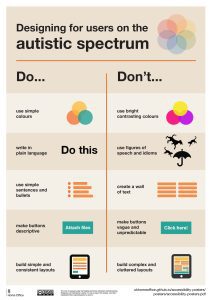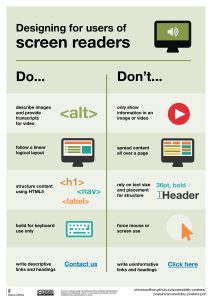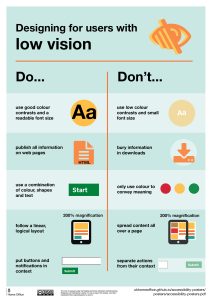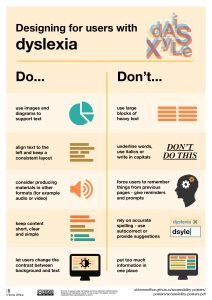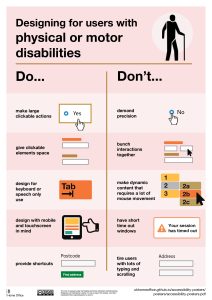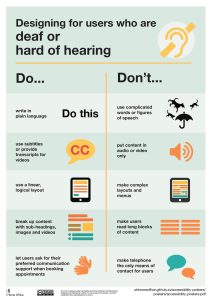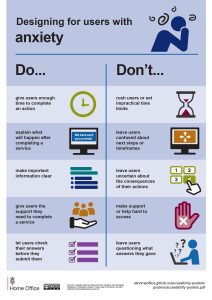Why Website Accessibility Matters for Your Business (and How to Get It Right)
Summary and Key Takeaways
Accessible website design ensures inclusivity for users with disabilities.
Prioritizing accessibility enhances SEO, user experience, and legal compliance.
Common barriers include visual, auditory, and motor impairments, which can be mitigated with proper design.
Best practices include semantic HTML, readable text, and ARIA implementation.
Tools like WAVE and Lighthouse help assess accessibility and compliance.
Incorporating accessibility early reduces redesign costs and improves usability.
Successful case studies show accessibility benefits engagement and conversions.
Future trends include AI-powered accessibility and improved assistive technologies.
Table of Contents:
1. Understanding Accessibility
2. Importance of Accessibility in Website Design
3. Legal Implications and Compliance Standards
4. Key Principles of Accessible Design
5. Common Accessibility Barriers
6. Accessible Design Best Practices
7. Tools for Testing Accessibility
8. Incorporating Accessibility Early in Design
9. Case Studies of Successful Accessible Websites
10. The Role of Accessibility in SEO
11. The Cost of Implementing Accessible Design
12. Training and Resources for Designers
13. Collaboration Between Designers and Users
14. Navigating Accessibility Updates and Trends
15. The Impact of Technology on Accessibility
16. Summary and Key Takeaways
Accessible Website Design
Website accessibility matters. Web design must prioritize accessibility, ensuring that everyone, including individuals with disabilities, can navigate and engage with your website effectively. By implementing accessible website design services, you enhance user experience and increase your site’s reach, positively impacting your brand’s reputation. Not only does this initiative protect you from potential legal issues related to accessibility violations, but it also demonstrates your commitment to inclusivity. Learn how these services can transform your online presence and make your website welcoming for all users.
Understanding Accessibility
The concept of accessibility in web design ensures that your website can be used by all individuals, regardless of their physical capabilities or disabilities. It is about creating an inclusive experience that allows users to navigate, interact, and engage with your content effectively. Making your site accessible doesn’t just benefit those with disabilities; it enhances usability for all users, ensuring everyone can access the information you offer without barriers.Definition of Web Accessibility
Definition of web accessibility revolves around the design principles and practices that enable people with disabilities to perceive, understand, navigate, and interact with the web. This includes considerations for individuals with visual, auditory, motor, and cognitive impairments. By implementing specific guidelines and tools, you create a more equitable online environment that welcomes all visitors.Importance of Accessibility in Website Design
Any website that overlooks accessibility risks alienating a significant portion of potential users. By prioritizing accessibility, you not only expand your audience but also enhance user experience across the board. Accessible websites are typically easier to navigate, which can lead to improved engagement and higher conversion rates. In essence, designing with accessibility in mind is not just a nice-to-have feature; it is a fundamental aspect of delivering a user-friendly website. Also, accessible design can improve your website’s SEO performance. Search engines favour websites that are easy to navigate and user-focused, leading to improved visibility and traffic. By ensuring your website meets accessibility standards, you are investing in a richer user experience that can yield long-term benefits for your business.Legal Implications and Compliance Standards
About legal implications, there are various laws and regulations that mandate web accessibility. In many countries, including UK and Europe, websites must comply with the WCAG and other relevant legislation. Failing to meet these standards can lead to potential legal repercussions, including lawsuits and fines, which can be detrimental to your business’s reputation and financial stability. And it’s also worth noting that compliance with accessibility standards, such as the Web Content Accessibility Guidelines (WCAG), is not just about avoiding legal trouble. Adhering to these guidelines demonstrates a commitment to social responsibility and inclusivity, positioning your brand as a leader in accessibility. This commitment can enhance your brand image and foster customer loyalty among a wider audience.Key Principles of Accessible Design
Clearly, to create an accessible website, it’s vital to incorporate certain key principles that ensure your content is friendly to all users, including those with disabilities. These principles make up the foundation of accessible design, allowing you to engage a wider audience. By highlighting attributes such as perceptibility, operability, and understandability, you can make significant strides in enhancing user experience and increasing your website’s reach.Perceivable Content
Among the primary principles of accessible design is the need for your content to be perceivable. This means that all users should be able to see, hear, or otherwise engage with the information presented on your website. You can achieve this by providing text alternatives for non-text content, such as images, and ensuring that visuals are sufficiently high in contrast so that they are distinguishable by users with visual impairments. Additionally, captions and transcripts for audio and video content offer your audience the flexibility to absorb information in their preferred format.Operable Interfaces
Alongside perceptibility, operable interfaces are vital in creating a website that all users can navigate easily. This refers to the necessity for all interface elements to be usable by every visitor, including those who may rely on assistive technologies like screen readers or keyboard navigation. You should ensure that all elements—including links, buttons, and form fields—are keyboard-accessible. Providing adequate time for users to read and interact with content is also a component of this principle; time-limited activities can present serious challenges to individuals with cognitive or motor disabilities. Another important consideration in operable interfaces is focus management and the clear designation of interactive elements. Auditory and visual prompts can guide users effectively through your site, making it easy for them to understand where they are and how to navigate. The more intuitive and user-friendly these interfaces are, the better your audience will engage with your content.Understandable Navigation
Understandable navigation is vital for guiding users through your website effortlessly. You want to ensure that all your navigation elements are clear and consistent, appealing to both first-time visitors and those returning for further exploration. By organizing content in a predictable manner and utilizing easily interpretable labels, you set clear expectations for your users, which significantly enhances their ability to locate desired information quickly. Avoid jargon and overly complex language in your navigation; making it straightforward has lasting advantages for your site’s usability. Operable navigation also amplifies the user experience on your site, as it allows visitors to find what they need without excessive frustration. Provide clear paths and labels, ensuring that you present all options in an organized structure, which will yield a positive impression of your site and encourage repeated engagement from diverse user groups.Common Accessibility Barriers
Your website may encounter various accessibility barriers that hinder its usability for people with disabilities. Understanding these barriers is crucial in creating an inclusive experience for all users. Common obstacles include challenges faced by individuals with visual, hearing, and motor impairments. By addressing these issues, you can significantly improve the accessibility of your website, making it a more welcoming space for everyone.Visual Impairments
With approximately 1 in 10 individuals experiencing some form of visual impairment, it’s crucial to implement design strategies that cater to their needs. This includes providing alternative text for images, ensuring high color contrast, and enabling keyboard navigation. Without these elements, users with limited vision may struggle to interact with your content, leading to frustration and a negative user experience.Hearing Impairments
Beside visual impairments, hearing impairments can pose significant barriers in your web design. Users who are Deaf or hard of hearing may find it challenging to engage with audio-based content, such as videos and podcasts. Including transcriptions, captions, and visual cues can aid in making your content more accessible, allowing a broader audience to engage with your materials and messaging. At the same time, be mindful of including visual alternatives to auditory instructions or information on your site. This practice not only makes your content more inclusive for people with hearing impairments but also enhances the overall user experience for all visitors. As an added benefit, captioning videos can positively influence your site’s SEO by providing search engines with more context about the content.Motor Impairments
By addressing the needs of users with motor impairments, you can create a more accessible and user-friendly experience. This includes designing intuitive navigation, ensuring interactive elements are easily clickable, and minimizing the need for precise mouse movements. Barriers like these can make it difficult for individuals with limited dexterity to interact with your website effectively. And incorporating features such as voice commands or keyboard shortcuts can empower users with motor impairments to navigate your site with ease. It’s crucial to conduct user testing with these individuals to identify any potential challenges and address them proactively. Ultimately, thoughtful design can make all the difference in providing an inclusive experience for every visitor to your website.Source: Gov UK Blog
Accessible Design Best Practices
Despite the increasing awareness around web accessibility, many websites still fall short in providing an inclusive experience for all users. Implementing accessible design best practices can not only enhance user experience but also expand your audience by ensuring that individuals with disabilities can navigate and interact with your site effectively. These practices include using semantic HTML, ensuring text readability, and implementing ARIA (Accessible Rich Internet Applications) features. By incorporating these elements, you demonstrate a commitment to accessibility and inclusivity in your online presence.
Using Semantic HTML
By utilizing semantic HTML, you create a structure that is meaningful to both users and assistive technologies. This involves using the appropriate HTML tags to define headings, lists, navigation menus, and other content elements. When you use semantic tags correctly, screen readers can interpret the content accurately, allowing users with visual impairments to understand and navigate your site more easily. Furthermore, a well-structured semantic layout can enhance SEO, as search engines can better recognize the importance of various elements on your page.
Additionally, when you take the time to focus on semantic HTML, you foster a logical flow of information that benefits all users. This practice involves using heading tags in a hierarchical manner, starting from h1 for titles to h6 for subheadings. By maintaining this structure, you ensure that all users can follow along, enhancing the overall user experience.
Ensuring Text Readability
On your website, text readability plays a significant role in ensuring that all visitors can easily consume the content. This includes choosing appropriate font sizes, line heights, and colour contrasts. By using a font size of at least 16px and maintaining a high contrast between text and background, you create an environment where users can read comfortably. Moreover, breaking up large blocks of text into smaller paragraphs and using bullet points can make your content more digestible.
A user-friendly approach also involves considering a variety of readers, including those with dyslexia or cognitive impairments. Using sans-serif fonts, avoiding overly complex language, and ensuring consistent navigation throughout the site are all practices that can further enhance text readability. When you prioritize readability, you demonstrate respect for your audience’s diverse needs and enhance the overall accessibility of your site.
Implementing ARIA (Accessible Rich Internet Applications)
Above all, implementing ARIA roles and properties is instrumental in making dynamic content accessible. ARIA expands the capabilities of HTML by allowing you to define custom behaviors and interfaces that are more accessible to users of assistive technologies. By integrating ARIA, you can improve the accessibility of interactive elements such as forms, buttons, and menus, providing context and roles that these components may lack in standard HTML alone.
HTML brings your static elements to life, but implementing ARIA enhances that experience to make it more inclusive. By defining roles and states, such as notifying users of updates or interactions within your application, you ensure that assistive technologies can communicate changes effectively. As a result, your site not only meets accessibility standards but also delivers a smoother and more informative experience for all users.
Tools for Testing Accessibility
Keep in mind that assessing your website’s accessibility is a multifaceted process that employs a variety of tools and techniques. Utilizing the right tools can significantly enhance your understanding of how accessible your website is and areas that need improvement. This section will explore three primary categories of accessibility testing tools: automated testing tools, manual testing techniques, and user testing and feedback.
Automated Testing Tools
Any website owner will benefit from leveraging automated testing tools to evaluate accessibility issues quickly and efficiently. These tools can analyze your website’s code and provide instant feedback on various accessibility standards, such as alt text for images and header structure. Tools like WAVE and Siteimprove allow you to scan web pages at scale, making it easy to spot problems that might affect users with disabilities. However, while automated tools can identify many barriers, they cannot replace a comprehensive accessibility evaluation. The WAVE Accessibility Testing Tool is a great resource for reviewing a web page for accessible design issues and suggested improvements.
Manual Testing Techniques
An effective approach to accessibility testing also involves implementing manual testing techniques. These techniques require human evaluation to identify issues that automated tools may overlook. For instance, navigating your website using only a keyboard can reveal how accessible your site is for individuals who rely on keyboard navigation. Performing screen reader tests helps you understand the user’s experience, ensuring that your content is read in a logical and coherent manner. Additionally, reviewing color contrasts and testing visual elements side by side with users will help you spot potential pitfalls.
Considering these techniques, it’s evident that manual testing is an important part of your accessibility journey. Engaging real users with disabilities for feedback allows you to gather insights that no automated algorithm can provide. By observing actual users interacting with your site, you can gain a deeper understanding of the barriers they encounter and enhance the overall user experience.
User Testing and Feedback
Before finalizing your accessibility strategy, actively seeking user testing and feedback is vital to ensuring your website meets the needs of all users. Gathering input from individuals with disabilities can reveal gaps in accessibility that automated and manual testing methods may miss. By conducting structured usability tests, you can observe how users navigate through your site and where they face challenges. This process not only aids in identifying issues but also fosters a user-centered approach to design and development.
In addition, providing accessible user testing sessions encourages an inclusive culture within your organization. It demonstrates your commitment to accessibility, enhances user satisfaction, and shows potential clients that you prioritize accessibility in your services. Gathering and implementing user feedback allows you to iterate and refine your website, ultimately leading to a more inclusive experience for everyone.
Incorporating Accessibility Early in the Design Process
Many designers often overlook accessibility considerations during the initial phases of design, only to address them later in the process. This can lead to significant challenges and costs in retrofitting designs to meet the diverse needs of users. By incorporating accessibility from the beginning, you ensure that your website is not only compliant with accessibility guidelines but also user-friendly for everyone. This proactive approach can greatly improve the overall user experience, making your site welcoming for individuals with varying abilities.
Designing for All Users
Early in the design process, you should prioritize creating an inclusive environment. This means taking into account the different needs of users, such as those with visual impairments, hearing difficulties, or cognitive disabilities. By doing so, you can develop web interfaces and functionalities that cater to a wider audience, allowing your website to reach its full potential. Incorporating accessible design elements like alternative text for images or adjustable font sizes makes your content available and engaging for all users.
Developing Inclusive Design Strategies
Developing inclusive design strategies involves integrating accessibility principles into every aspect of your design process. You should consider various user scenarios while designing, ensuring that your website accommodates individuals with different access needs. Incorporate guidelines such as the Web Content Accessibility Guidelines (WCAG), which provide a framework for creating richly informative and accessible websites everywhere. This attention to diverse user perspectives not only enriches your design but also fosters a sense of belonging among your audience.
Considering the wide range of disabilities and use cases can help you create designs that are intuitive and accommodating. Engaging with users to gather their feedback and adjusting your design strategy accordingly is vital. You may want to conduct usability testing with participants who have disabilities, providing you with insights that directly inform your design choices. This ensures that your website isn’t just visually appealing but also practically usable for everyone.
Iterative Design and Accessibility Reviews
Any effective design process should embrace iterative design and accessibility reviews as an ongoing practice. By continuously testing and refining your designs, you can identify potential accessibility barriers and address them before they impact your users. You can conduct regular evaluations of your website to ensure it follows accessibility standards and meets user needs, making adjustments based on real-time feedback. This iterative approach not only enhances the functionality of your site but also builds trust with your users, as they see that their needs are being prioritized.
In addition, implementing accessibility reviews during various stages of the design process allows you to catch potential issues early. This proactive habit enhances your final product, ensuring it meets the needs of all users while minimizing the potential for future fixes and revisions. Engaging in a cycle of evaluation and refinement helps create a more inclusive online experience, aligning your goals with user satisfaction and accessibility standards.
Case Studies of Successful Accessible Websites
After exploring the benefits and principles of accessible website design, it’s vital to look at actual examples of success in this area. Numerous organizations have made significant strides in improving their websites to become more inclusive and user-friendly. Here are some notable case studies that showcase effective strategies and outcomes for accessible web design:
- Government of Canada: This site implements AA standards, resulting in over 95% of users finding information easily accessible, irrespective of disabilities.
- BBC: With WCAG 2.1 compliance, BBC’s website is designed to cater to 7 million users with disabilities, enhancing their experience dramatically.
- Walmart: The e-commerce giant revamped its platform, leading to a 20% increase in sales among users with disabilities due to improved navigation and usability.
- American Express: Their commitment to accessibility led to a 15% increase in customer satisfaction ratings among disabled users.
- University of Michigan: This institution’s website redesign focusing on accessible learning resources has contributed to a 30% boost in online course enrollment from diverse learners.
Example 1: Government Websites
Behind the successful transformation of government websites lies a dedicated approach to making vital information accessible to all citizens. Many government agencies understand the importance of inclusive website design and have taken steps to ensure that vital services are easy to navigate for people with various disabilities. Typically, these websites incorporate multiple assistive technologies, including screen readers and keyboard navigation, which facilitate access to critical information about public services.
You’ll find that such initiatives often involve user testing with individuals who have disabilities to gather feedback and improve the website experience continually. As a result, user engagement has significantly increased, leading to better civic participation and a greater sense of inclusion among citizens.
Example 2: E-commerce Platforms
The rise of accessible e-commerce platforms showcases how inclusivity can directly impact business success. Companies like Walmart and Amazon have recognized that addressing the unique needs of all customers, including those with disabilities, can result in increased customer loyalty and higher sales. By incorporating features such as keyboard navigation, alt text for images, and proper colour contrast, these platforms have demonstrated that accessibility benefits everyone.
Indeed, studies have shown that businesses prioritizing accessibility experience up to a 20% growth in sales from users with disabilities while fostering a positive brand image among all customers. This inclusive approach not only increases your potential customer base but also enhances user reviews and overall satisfaction.
Example 3: Educational Institutions
For educational institutions, creating accessible websites is vital for providing learners with equal opportunities to participate in their educational journey. Many universities have made concerted efforts to ensure their online resources are tailored to accommodate students with various disabilities. This includes implementing features like captioned video content, screen reader compatibility, and easily navigable course materials.
Even institutions that have prioritized accessibility have reported substantial increases in enrollment among diverse learners. By removing barriers, they can support all students’ unique learning needs, thus fostering an inclusive environment where everyone can thrive academically.
The Role of Accessibility in SEO
To understand the significance of accessibility in website design, you must consider that an accessible website not only serves those with disabilities but also enhances user experience for all visitors. When users can navigate your site without barriers, they spend more time engaging with your content. This increased engagement can lead to lower bounce rates and higher conversion rates, both of which are factors that search engines consider important in determining your site’s ranking. By prioritizing accessibility, you can create a more inclusive environment that benefits everyone, while simultaneously improving your site’s visibility.
How Accessibility Impacts Search Rankings
Above all, search engines aim to deliver the most relevant and usable website results to users. Therefore, an accessible website aligns well with search engine algorithms that prioritize user experience. When you implement accessibility features like proper heading structures, alternative text for images, and keyboard-friendly navigation, you not only enhance usability but also aid search engines in indexing and understanding your content better. This can lead to a significant boost in your search rankings, as both users and search engines appreciate easy-to-navigate sites.
Best Practices for Accessible SEO
Between implementing basic accessibility features, you should also explore additional SEO strategies that complement these efforts. Use semantic markup to provide structure and meaning to your content, which helps both users and search engines navigate your website effectively. Ensure that your website is responsive and mobile-friendly, as an increasing number of users access the internet via mobile devices. Additionally, employing a clear and concise content strategy that adheres to accessibility principles can enhance your overall SEO performance, making your site more appealing to visitors.
It is wise to regularly audit your website for accessibility features and update your SEO practices as required. By remaining vigilant about accessible design, you can create an inclusive experience that attracts a broader audience. Furthermore, using descriptive URLs and meta descriptions can help search engines categorize your content accurately, contributing to better search visibility.
Tools for Evaluating Accessibility and SEO
About the various tools available, there are specialized applications designed to help you evaluate both accessibility and SEO simultaneously. Tools such as Lighthouse, WAVE, and Siteimprove provide insights into how well your website aligns with accessibility standards. By utilizing these tools, you can identify potential issues that may hinder accessibility and, consequently, negatively affect your search rankings. Addressing these issues promptly can enhance both user experience and search visibility, ultimately benefiting your site in multiple ways.
Impacts of using these evaluation tools include not only improving user satisfaction but also ensuring compliance with relevant accessibility guidelines. By regularly assessing your website with these tools, you can make informed decisions about where to direct your efforts, enhancing both accessibility and SEO outcomes for your audience. By maintaining a proactive approach, you can stay ahead of the curve in delivering an inclusive and user-friendly web experience.
The Cost of Implementing Accessible Design
Despite common misconceptions, the cost of implementing accessible design is not merely an initial expenditure but an investment that yields significant returns. Accessibility often requires some upfront costs, but these should be viewed in the context of future opportunities and savings. By integrating accessible design features right from the start, you can help avoid the costs associated with retrofitting and compliance issues in the future. Taking a proactive approach to accessibility not only enhances your website but also broadens your audience and customer base.
Initial Investment and ROI
Before commenceing on your journey toward an accessible website, it’s important to understand the initial investment required. This often involves designing or redesigning your digital platforms to meet web accessibility standards. However, the return on investment (ROI) for these efforts can be substantial. By catering to users with disabilities, you tap into a market that is often overlooked, potentially increasing your customer base and enhancing user experience across the board.
Long-term Benefits of Accessibility
Cost savings realize themselves in the long run, as fully accessible websites help reduce the risk of lawsuits and administrative fines associated with non-compliance. Furthermore, organizations noted that accessible design often leads to higher customer satisfaction, which correlates to increased loyalty and repeat business. By prioritizing accessibility, you also pave the way for innovation, as many features designed for inclusivity can enhance usability for all users, positively impacting overall design efficiency.
Implementing accessible design not only fulfills a moral obligation but also positions your brand as a leader in inclusivity, which can significantly enhance your reputation. As customers become increasingly aware of accessibility issues, choosing a company that values accessible design can influence their purchasing decisions. Furthermore, these changes help improve your search engine optimization (SEO), as search engines favour sites that provide a better user experience.
Comparative Costs: Accessible vs. Non-Accessible Design
On the topic of cost comparison, investing in accessible design can save you money over time when compared to non-accessible approaches. The table below outlines the differences between each approach:
| Initial Design Costs | Accessible design may require higher upfront costs for compliance but reduces future expenses related to fixes. |
| Legal Risks | Non-accessible design can lead to legal challenges and potential fines, whereas accessible design mitigates these risks. |
| Customer Base Expansion | Accessible design can expand your market reach, appealing to a broader audience and boosting sales. |
| Maintenance Costs | Ongoing maintenance is often less expensive for accessible sites, as they typically require fewer adjustments over time. |
For instance, if you opt for a non-accessible design, you may find yourself facing unexpected redesign costs, fines, and an ever-shrinking user base as more customers demand inclusivity in their online experiences. The table below highlights how initial choices impact long-term expenses:
| Non-Accessible Website | Higher costs due to legal challenges, continued redesigns, and a dwindling audience base. |
| Accessible Website | Lower long-term costs, enhanced audience reach, and reduced risk of legal issues. |
Training and Resources for Designers
All web designers looking to specialize in accessible website design should be aware of the various training mediums available to enhance their skills. Workshops and online courses can provide you with invaluable knowledge that is both practical and up-to-date. Many institutions offer *hands-on* training sessions in the form of workshops that not only cover the principles of accessibility but also involve real-world applications. Online platforms, like Coursera and Udemy, have numerous courses designed for different skill levels which can be taken at your own pace, making them an excellent fit for busy schedules.
Workshops and Online Courses
Any decision to invest in your education should involve exploring both in-person workshops and online courses tailored to accessibility standards. In-person workshops often facilitate networking opportunities with experienced professionals, allowing you to share and gain insights directly from others in the field. On the other hand, online courses can often provide a more flexible approach, enabling you to revisit materials as needed and fit your learning around your personal commitments.
Recommended Reading and Guides
Between improving your skills through training sessions and workshops, exploring into recommended reading materials is another powerful way to deepen your understanding of accessible design. There are numerous guides and books authored by industry experts that outline best practices, tools, and techniques you can use in your work. Resources like the Web Content Accessibility Guidelines (WCAG) are vital, and you should also consider exploring publications that focus specifically on the user experience for people with disabilities.
Reading these resources not only informs you of the latest standards and guidelines but also inspires you to think critically about your design choices. Furthermore, these materials often include real-world case studies that can provide insights into both common pitfalls and exceptional implementations of accessible design.
Community and Support Networks
Across the web design industry, connecting with others who share your commitment to accessibility can augment your learning experience. Actively participating in communities and support networks not only helps you stay current with trends but also builds a supportive circle where you can exchange ideas and troubleshoot challenges you may face in your projects. Online forums, social media groups, and local meetups can be excellent venues to discuss topics related to inclusivity in design.
Understanding and engaging with community networks allows you to share experiences and access diverse perspectives on accessibility practices. These interactions can provide unexpectedly valuable insights that may elevate your projects and encourage a more inclusive mindset in your designs.
Collaboration Between Designers and Users
Now, understanding the importance of collaboration between designers and users cannot be overstated. In the rapidly evolving field of web design, having a deep connection with your users leads to more empathetic and functional design solutions. By actively engaging with a diverse group of users, you gain insights that not only enhance usability but also ensure that your website meets the real needs of its audience. This process of continuous feedback allows you to uncover potential issues that may be overlooked by a design team that lacks firsthand user experience.
Importance of Diverse User Feedback
Around the world, users have different perspectives shaped by personal experiences, abilities, and preferences. Gathering feedback from a diverse audience is necessary for recognizing both the commonalities and unique challenges they encounter while navigating your website. This approach ensures that you create a platform that is not only accessible but also inviting to all users. By prioritizing feedback from various demographics, including individuals with disabilities, you can uncover significant areas for improvement that may not have appeared on your initial radar.
Building a User-Centric Design Team
The foundation of effective web design lies in assembling a team that focuses on user needs. Building a user-centric design team involves integrating team members who possess a rich array of skills and backgrounds, fostering a culture of shared responsibility for accessibility. By adopting a collaborative mindset, your team will innovate more effectively, ensuring that user feedback is not only collected but also applied in design iterations consistently. This internal approach impels designers to view projects through the lens of the user, fundamentally altering how websites are conceptualized and executed.
Diverse team members contribute different viewpoints that can illuminate aspects of design that might be missed by a more homogeneous group. This variety enables you to brainstorm solutions that address accessibility and usability across a broader spectrum of user needs. Together, you can create a rich tapestry of ideas that aligns closely with the demands of your users, propelling your project toward success.
Engaging with Accessibility Advocates
Diverse advocates for accessibility play a vital role in promoting inclusive design practices. By reaching out to these champions, you can tap into a wealth of knowledge and experience that informs your design approach. Their insights can be invaluable in ensuring that your website meets the needs of users with varying levels of ability. Engaging with accessibility advocates not only enhances your credibility but also fosters relationships that can lead to future collaborations.
It is necessary to establish open channels of communication with accessibility advocates. This ongoing dialogue ensures that your design processes remain aligned with the latest standards and best practices in accessibility. By integrating their expertise and recommendations, you can make your website a benchmark for inclusive design and guarantee that your digital presence is both functional and welcoming for everyone.
Navigating Accessibility Updates and Trends
Not staying updated on accessibility can lead to pitfalls in your web design process. As technologies evolve and user expectations change, it is crucial for you to keep pace with the latest trends in accessible website design. The landscape is not static; it changes with new guidelines, tools, and practices that aim to enhance user experience for people with disabilities. By aligning your design approach with these developments, you can ensure that your site continues to serve all users effectively and efficiently.
Current Trends in Accessible Design
Against the backdrop of a rapidly evolving digital world, you may find that many companies are moving towards more inclusive design practices. Accessibility is not just about compliance with standards but is increasingly viewed as a pillar of user-centered design. This shift includes implementing features like keyboard navigation, voice command integration, and visual support elements that meet the needs of those with various disabilities. You should consider these elements in your design to not only enhance usability but also engage a wider audience.
Future Directions in Web Accessibility
To effectively position your website for long-term success, you need to anticipate where web accessibility is headed. Emerging technologies such as artificial intelligence and machine learning are becoming integral to creating smarter, more tailored user experiences. You should consider how these technologies can evolve the way users interact with your website, allowing for more personalized accommodations based on individual needs. Moreover, developments in augmented reality are also shaping how accessibility features can be implemented to create inclusive environments.
Accessible design is also trending towards a more holistic approach. Your website’s future will be influenced by the increasing emphasis on seamless integrations that support accessibility tools. This means focusing not just on legal compliance but on fostering an environment where all users can access and interact with your content without barriers. It’s a sustainable practice that will likely enhance your brand’s reputation and broaden your customer base.
Staying Informed Through Industry News
An crucial strategy for you in navigating accessibility updates involves staying connected with the latest industry news and trends. Engaging with platforms that focus on web accessibility ensures you are aware of any legislative changes, emerging technologies, and best practices. These resources will not only inform your design process, but also equip you with valuable insights that can help improve your website’s accessibility and usability.
This ongoing education is key to developing a design mindset that prioritizes inclusivity. By following relevant blogs, joining professional networks, and participating in workshops, you will not only stay informed but also become part of a community dedicated to improving web accessibility standards. This engagement is vital to ensuring your designs are not only compliant but also effective and user-friendly.
The Impact of Technology on Accessibility
For anyone seeking to create an accessible online environment, understanding the role of technology is important. Advances in technology have exponentially increased the potential for inclusivity in web design, making it easier for you to reach a broader audience, including individuals with disabilities. As you explore various web design services, you will find that modern solutions focus on integrating accessibility features right from the outset, leading to a user-friendly experience that considers diverse needs.
Assistive Technologies and How They Work
Work tools such as screen readers, voice recognition software, and alternative input devices have revolutionized how people interact with digital content. These assistive technologies bridge gaps that otherwise exist, emerging as important components for individuals with visual, auditory, or mobility impairments. By leveraging these technologies, you can enhance your website’s accessibility, ensuring that users with various disabilities can navigate and engage with your site effectively.
Moreover, understanding how these technologies function will empower you to make informed decisions about your website design. For instance, knowing that screen readers interpret text and other semantic elements on a page allows you to structure your content in a way that prioritizes clarity and organization. By embracing accessibility best practices, you are not only complying with legal standards but also fostering an inclusive digital space.
Innovations in Web Design Tools
Behind the scenes of web development, innovations are continuously emerging, designed to simplify the integration of accessibility features into your websites. With improved design tools, you can now effortlessly implement accessibility standards, from keyboard navigations to proper color contrasts. These advancements enable you to build websites that not only look aesthetically pleasing but also cater to users with differing abilities.
Due to developments like automated accessibility checkers and user-friendly frameworks, you can streamline your workflow significantly. These tools analyze your web pages for accessibility issues and suggest actionable improvements, allowing you to address potential barriers sooner. With such resources at your disposal, your ability to create compliant, user-friendly websites is greatly enhanced.
The Future of AI and Accessibility
Innovations in artificial intelligence (AI) stand to reshape accessibility even further, making it a vibrant topic in web design conversations. As AI continues to evolve, you will see improved personalized experiences that adapt to individual user needs. Features like real-time captioning, enhanced voice control capabilities, and smart content recommendations are just some examples of how AI can make your websites more accessible and engaging.
As you contemplate the implications of AI on accessibility, it’s vital to consider how these advancements can turn abstract policies into tangible solutions. AI-powered tools enable organizations to analyze user behavior, screen for barriers, and adapt content more responsively. Accessibility practices will likely become even more seamless, allowing you to focus on creativity without compromising on the vital aspect of inclusivity in your design strategy.
Accessibility will remain a key factor in shaping the future of web design, as technological enhancements become integral to creating an equitable online experience. As you embrace these innovations, you can position your work to not only comply with standards but also to attract a diverse audience, contributing positively to the web’s overall inclusiveness.
Summing Up
With these considerations, understanding the importance of accessible website design services can significantly enhance your online presence. You have the opportunity to reach a wider audience by implementing accessibility features, ensuring that all users, regardless of their abilities, can enjoy a seamless browsing experience. This not only demonstrates your commitment to inclusivity but also positively affects your brand’s reputation, user engagement, and even search engine rankings. Investing in accessible design is a forward-thinking strategy that benefits both you and your audience.
As you move forward, integrating best practices for accessibility should be a top priority in your web development process. You can achieve this by partnering with specialized service providers who understand the nuances of accessible design. By doing so, you will not only comply with regulations but also create a more user-friendly environment for all visitors to your site. Ultimately, prioritizing accessibility in your web design will help you foster a more equitable digital space that welcomes every user.
Frequently Asked Questions
A: Accessible Website Design Services focus on creating websites that can be used by individuals with various disabilities, ensuring that all users can navigate, interact with, and benefit from online content. This encompasses optimizing website layout, content, and functionalities to meet accessibility standards such as the Web Content Accessibility Guidelines (WCAG).
A: Accessibility is important because it ensures that everyone, including individuals with visual, auditory, motor, or cognitive impairments, can access and use a website. By making websites inclusive, businesses can reach a larger audience, enhance user experience, comply with legal regulations, and improve overall brand reputation.
A: An accessible website design can include features such as alternative text for images, proper use of headings and landmarks, keyboard navigability, high contrast color schemes, text resize options, and proper labeling of forms and buttons. These features help individuals using assistive technologies understand and interact with the content effectively.
A: To ensure your website meets accessibility standards, you can start by conducting an accessibility audit using various tools and checklists that align with WCAG guidelines. Engaging with professionals who specialize in accessible design can offer you tailored solutions and ongoing monitoring to maintain compliance as web standards evolve.
A: Yes, failing to provide an accessible website can lead to legal implications, as many countries have laws protecting the rights of individuals with disabilities. Businesses may face lawsuits or complaints if their websites do not comply with accessibility regulations. Ensuring your website’s accessibility helps mitigate potential risks and aligns your business with ethical practices.
Steve Sims
https://www.stevesims.comI am a UK freelance small business website designer & developer based in Devon. With over 15 years of web design and seo expertise I use my blog to post articles and insights that I have found useful on my web design journey.

